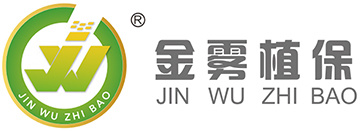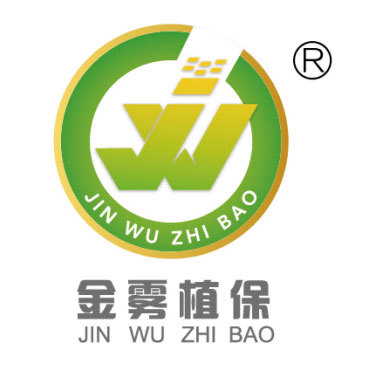A Brief History of the Development of Water-saving Irrigation Technology
Release time:
2024-06-28 11:37
The origin of life, water is the inevitable condition. Without water, life on earth would be exhausted. The struggle for water is an extremely important chapter in the thousands of years of human civilization. For example, Zheng Canal, Lingqu and Dujiangyan in China, and the irrigation projects with a long history on both sides of the Nile in Egypt are good examples.
Before the 20th century, after centuries of exploration, mankind learned the technology of blocking rivers to store water, building canals to divert water, and opening borders for irrigation. However, inefficient use of water has limited the expansion of irrigated areas. To produce enough food to feed a rapidly growing population, how to improve the utilization rate of water has become a major problem in the 20th century.
In 1894, an Iowa native named Charles Skinner invented a very simple sprinkler system, which pioneered the use of mechanical facilities for water-saving irrigation. In 1933, a farmer named auten inglehart in California invented the world's first rocker nozzle and registered a patent, which was made by the famous rain bird company. The advent of this new type of sprinkler has played a revolutionary role in promoting agricultural water-saving irrigation since then. After the use of the rocker sprinkler system, the utilization rate of water is greatly improved, which can be increased by more than 50% compared with the large water flooding. In this way, the same water can be filled with 50% more area. The American Society of Agricultural Engineers (ASAE) awarded Rainbird its "Historical Milestone Award" for this purpose at the "50th Anniversary Celebration of Agricultural Engineering" held in 1990 ".
After the Second World War, the United States economy, the rapid development of technology, Pierce (Pierce) as the pilot of the irrigation enterprises to create a variety of quick connection aluminum alloy joints, and thin-walled aluminum tube connection, the birth of a semi-fixed and fixed thin-walled sprinkler irrigation system, making a large area of sprinkler irrigation system possible. The semi-fixed system has the advantage of low cost and no effect on field farming. The disadvantage is that the manual moving labor intensity is large. The advantage of fixed sprinkler irrigation system is that the labor intensity is small, but the cost is high, which has an impact on field farming and is suitable for perennial crop irrigation.
In order to make full use of the advantages of semi-fixed sprinkler irrigation system of low cost, overcome the shortcomings of its high labor intensity, a mechanical drive similar to the semi-fixed system of sprinkler irrigation machine in the late 30 s by a man named Harry Farisstone (Harry. Firestone) invented and put into use. There are still several companies, such as the United States of Wade Co. (Wade Co.), Lake (Lake), Pierce (Pierce), etc. in the manufacture of this is called the roll type sprinkler (Side Roll or Wheel Moving) machine. Its advantage is that the cost is lower than the fixed sprinkler irrigation system, the labor intensity is lower than the semi-fixed, manual pipe moving system, and the maintenance is convenient. This machine has a simple structure and is driven by a small horsepower gasoline engine. The rolling wheel is made of thin-walled galvanized steel sheet, and the pipe is thin-walled aluminum alloy pipe. Suitable for irrigation of low dry crops, such as cotton, wheat, vegetables, turf, pasture, etc.
In the 1950 s, due to the rapid economic development, the cost of labor in the United States rose rapidly. Farmers are in dire need of machines with lower labor costs than roll-on sprinklers.
In 1952, a Colorado farmer named Frank (Frank) invented a hydraulic drive, automatic rotation, hanging sprinkler head above the sprinkler tool, named the center pivot sprinkler (Center Pivot). The right to produce this machine was later sold to the Varley Company of Nebalas California (now Vermont). This kind of machine was equipped with rocker nozzles produced by Rain Bird Company before the 1970 s. Its advantages are high automation procedures, very low irrigation labor costs; strong terrain adaptability, no need for flat ground. The disadvantage is that the land utilization rate is low (about 78%). After the 1960 s, this machine was widely used in the sparsely populated and uneven agricultural areas of central America, Colorado, Nebalasky, and Kansas.
In the 1970 s, due to the impact of the oil crisis, the nozzle of the center pivot sprinkler was changed from a rocker nozzle to a low-pressure micro-spray nozzle to achieve the purpose of saving energy. Since then, the hydraulic drive has gradually changed to electric drive, and the reliability is getting higher and higher. Currently, about 31% of the total irrigated area in the United States is irrigated using center-pivot systems. In order to improve land utilization, and later developed a translational sprinkler (Lateral Moving), but the use is not much. Because of the high cost, inconvenient maintenance, high energy consumption.
There is also a kind of irrigation equipment called reel sprinkler, which is widely popular in Europe, originated in France, suitable for medium and small farms. The whole machine is equipped with a large spray gun, which has a very large flow rate and range. This kind of machine is flexible and convenient to use, and the labor cost is low. But the energy consumption is high, the spray uniformity is not good, the soil erosion is serious, and the intensity of the crop is too strong.
Although the water use efficiency of sprinkler irrigation is much higher than that of traditional surface irrigation techniques, it is still unsatisfactory for very dry and low rainfall areas. Because sprinkler irrigation to the whole area wet, the evaporation between the crop is basically ineffective.
In the 20th century, sprinkler irrigation, drip irrigation technology in addition to the unprecedented development in agriculture, urban landscaping is also widely used. Lawn irrigation with buried sprinkler irrigation technology, the use of buried, mainly for the purpose of landscaping. Famous manufacturers are American Rainbird Company, Toro Company and Hunter Company.
Since the 1980 s, many companies and researchers have begun to explore subsurface drip irrigation technology (SDI) to maximize the advantages of drip irrigation technology (no ground evaporation loss). In Queensland, Australia, California, Hawaii and other places, SDI is widely used to irrigate sugarcane and vegetables with good results. Rain Bird Company buried drip irrigation belt 30cm underground in southern Xinjiang, China, and used it for irrigation of railway windbreak forest belt, which also achieved good results. SDI is also used in lawn irrigation, but the report of good effect is rare, and the promotion is slow. Rain Bird has developed a series of drip irrigation equipment for garden flowers and street trees, which is popular in the United States, Canada and other places.
China began to introduce sprinkler irrigation and drip irrigation technology in the 1970 s, and once developed rapidly in the mid-1980s. However, due to economic and technological backwardness, they have been disembarked within a few years. In the mid-1990s, the country was fully aware of the shortage of water resources in China and re-promoted water-saving technologies. After years of hard work, great progress has been made. The introduction of digestion and absorption and imitation of a number of drip irrigation production lines. The quality of the product has been greatly improved than in the 1980 s. domestic famous drip irrigation manufacturers are: beijing lvyuan company, shandong laiwu plastic factory etc. There are many domestic nozzle manufacturers, but the quality is excellent and stable. Sprinkler irrigation machines also performed poorly.
After the previous in the last century, the use of irrigation water technology has reached a very high level. However, the shortage of fresh water resources is becoming more and more serious, and mankind will face more severe challenges in the new century.
In the 21st century, irrigation technology will develop at an unprecedented speed. Many irrigation experts predict that irrigation in the 21st century will move towards lower energy consumption and cost, higher efficiency (SDI will be widely promoted), high automation and high intelligence (computer control, precision irrigation).
Let us look forward to the birth of more updated water-saving irrigation technology in the new century, so that life on earth continues.
Related News
Stainless steel spiral nozzle for atomizing spray gun
In many nozzles, atomizing spray gun silicon carbide spiral nozzle is a great feature. With the continuous small spiral body, the slurry through the spiral line tangent and bump, constantly changing direction, spray into a thin sheet of concentric shaft cone, and the liquid from the nozzle cavity into the outlet of the channel are not hindered. The atomizing spray gun system still has high absorption power at low working pressure, and is approved by the system.
Spring is the key period for most tree species to blossom, sow and start a new round of seedling growth cycle. Excessive drought will adversely affect the normal physiological process and flower bud differentiation of trees or seedlings, as well as the smooth emergence of seeds after sowing, which will lead to the decline of the yield and quality of forest seeds and seedlings, and affect the smooth development of forestry production. According to the weather and drought, soil moisture, combined with forest and species conditions, scientific analysis and effective measures can greatly reduce the harm caused by extreme drought and minimize the loss.
Popular Science Knowledge: Precautions for Safe Operation of Agricultural Machinery
Plant protection machinery 1. The operator must understand the knowledge of the use of machinery and the nature of the agent, and master the measures to prevent poisoning and rescue methods. 2. The operator must wear protective equipment before operation. After operation, all body parts and protective equipment in contact with drugs must be washed with soap and water. 3. If the wound is not healed, lactating women, pregnant women, children and other personnel who are not suitable for operation shall not watch in the operation field. 4. The medicine box, pipeline and interface of the working machine shall not leak, and the working pressure shall not exceed the specified value during operation. The pressure in the box shall be removed before troubleshooting and disassembly of joints and nozzles.
Wheat to promote weak to strong so good spraying effect
If weeds are not treated in autumn in time before winter, chemical weeding can be carried out as early as possible from the period of winter wheat turning green to rising. The temperature fluctuates greatly in early spring, so clear weather should be selected for chemical weeding in wheat fields, and a boom sprayer should be used for chemical weeding from 10 am to 4 pm. Reasonable selection of boom sprayer, the use of boom sprayer for prevention and control operations, so as to achieve uniform spraying, no leakage of spray, no heavy spray, to prevent pesticide damage; The overlap of the handover line shall not be more than 3% of the working width, and the same crop in the same plot shall be completed within 3 days. It is not suitable to operate under the conditions of wind force exceeding level 3, heavy dew, rain and temperature above 30 ℃.






